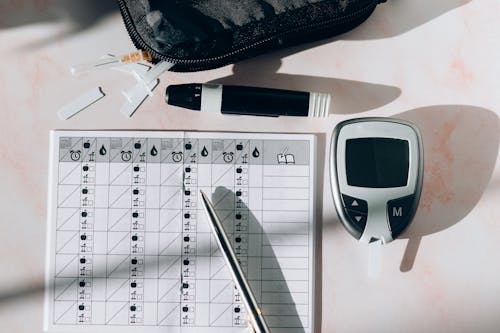
In today’s fast-paced world, achieving a work-life balance has become increasingly challenging. With the advent of technology, the boundaries between work and personal life have blurred, leading to longer working hours and heightened stress levels. The constant pressure to excel professionally while maintaining a fulfilling personal life can create a significant strain. This essay explores the concept of work-life balance, its importance, and practical strategies for achieving it in a demanding environment.
Understanding Work-Life Balance
Definition and Importance
Work-life balance refers to the equilibrium between the demands of work and personal life, allowing individuals to manage their professional responsibilities without sacrificing their well-being or personal interests. It encompasses:
- Time Management: Allocating adequate time for work, family, leisure, and self-care.
- Stress Management: Maintaining mental and physical health despite work pressures.
- Fulfillment: Achieving satisfaction and happiness in both personal and professional domains.
The importance of work-life balance lies in its impact on overall well-being. It contributes to:
- Mental Health: Reducing stress and preventing burnout.
- Physical Health: Allowing time for exercise, relaxation, and healthy eating.
- Relationships: Enhancing the quality of personal relationships by ensuring sufficient time for family and friends.
- Productivity: Improving work efficiency and job satisfaction through better management of stress and time.
The Challenges of Achieving Work-Life Balance
Increased Work Demands
The modern work environment is characterized by:
- Extended Working Hours: Many employees face expectations to work beyond traditional hours, contributing to fatigue and decreased personal time.
- High Performance Pressure: Competitive job markets and high expectations can lead to excessive stress and reduced personal time.
Technological Distractions
Technology, while beneficial, has also contributed to:
- Constant Connectivity: Emails, instant messages, and notifications can make it difficult to disconnect from work, leading to a blurred line between work and personal life.
- Work-from-Home Challenges: Remote work can create difficulties in separating professional and personal spaces, leading to increased work hours and decreased downtime.
Personal Expectations and Responsibilities
Individuals often struggle with:
- Self-Imposed Pressure: The desire to excel both professionally and personally can lead to overcommitment and stress.
- Family and Personal Responsibilities: Balancing family duties, personal interests, and professional obligations requires effective time management and prioritization.
Strategies for Achieving Work-Life Balance
Effective Time Management
Prioritize and Delegate
- Identify Priorities: Determine what tasks and responsibilities are most important in both work and personal life. Focus on high-priority activities that align with your goals and values.
- Delegate Tasks: Delegate tasks at work and home where possible. Trusting others with responsibilities can reduce your workload and stress.
Create a Schedule
- Plan Your Day: Use a planner or digital calendar to schedule work tasks, family time, and personal activities. Having a clear plan helps manage time effectively.
- Set Boundaries: Establish boundaries between work and personal time. For example, set specific hours for work and avoid checking emails or taking work calls outside these hours.
Establish Routines
- Daily Routines: Create daily routines that incorporate work, family, and self-care. Consistent routines can help manage time effectively and reduce stress.
- Weekly Planning: Plan your week in advance to allocate time for important activities and ensure a balance between work and personal commitments.
Stress Management Techniques
Practice Mindfulness and Relaxation
- Mindfulness: Engage in mindfulness practices, such as meditation or deep breathing exercises, to reduce stress and increase focus.
- Relaxation Techniques: Incorporate relaxation techniques, such as yoga or progressive muscle relaxation, to manage stress and improve well-being.
Physical Activity and Healthy Habits
- Exercise Regularly: Incorporate regular physical activity into your routine to boost mood, energy levels, and overall health.
- Healthy Eating: Maintain a balanced diet to support physical and mental health. Avoid relying on caffeine and junk food to cope with stress.
Seek Professional Support
- Counseling: Consider seeking counseling or therapy if stress becomes overwhelming. Professional support can provide strategies for managing stress and improving work-life balance.
- Employee Assistance Programs: Utilize employee assistance programs offered by employers for support with stress management and work-life balance.
Creating a Supportive Work Environment
Open Communication
- Discuss Workload: Communicate with your supervisor about your workload and any challenges you’re facing. Open dialogue can lead to adjustments and support.
- Negotiate Flexibility: Negotiate flexible work arrangements, such as remote work or adjusted hours, to better balance work and personal responsibilities.
Promote Work-Life Balance Policies
- Encourage Policies: Advocate for work-life balance policies within your organization, such as flexible working hours, paid time off, and wellness programs.
- Support a Healthy Culture: Foster a workplace culture that values work-life balance and supports employees in managing their responsibilities.
Balancing Personal and Professional Goals
Set Realistic Goals
- Work Goals: Set achievable professional goals that align with your capabilities and resources. Avoid overcommitting and setting unrealistic expectations.
- Personal Goals: Establish personal goals that reflect your values and interests. Balance these goals with your professional responsibilities to maintain overall well-being.
Evaluate and Adjust
- Regular Check-Ins: Regularly evaluate your work-life balance and make adjustments as needed. Assess how well you’re managing your time and responsibilities and identify areas for improvement.
- Be Flexible: Recognize that achieving work-life balance is an ongoing process. Be flexible and willing to adjust your strategies based on changing circumstances and priorities.
The Role of Technology in Work-Life Balance
Leveraging Technology Positively
Productivity Tools
- Task Management Apps: Use task management apps to organize and prioritize your work tasks, improving efficiency and reducing stress.
- Calendar and Scheduling Tools: Utilize digital calendars and scheduling tools to plan and manage your time effectively.
Communication Tools
- Set Boundaries: Use communication tools to set boundaries for work-related interactions. For example, set email notifications to be received only during work hours.
- Schedule Breaks: Use technology to schedule regular breaks and reminders to step away from screens and take care of your well-being.
Minimizing Negative Impact
Avoid Overuse
- Digital Detox: Implement digital detox practices to disconnect from technology and reduce screen time. Designate times for unplugging and engaging in offline activities.
- Limit Notifications: Turn off non-essential notifications to minimize distractions and maintain focus during work and personal time.
Promote Healthy Tech Use
- Create Tech-Free Zones: Establish tech-free zones in your home, such as the bedroom or dining area, to promote quality time and relaxation.
- Encourage Balance: Promote a balanced approach to technology use in both personal and professional settings, fostering healthy habits and boundaries.
Personal Stories and Case Studies
Examples of Successful Work-Life Balance
Case Study 1: The Corporate Executive
A corporate executive implemented strategies to achieve work-life balance by:
- Delegating Tasks: Delegating responsibilities to team members and focusing on high-priority tasks.
- Setting Boundaries: Establishing clear boundaries between work and personal time, including tech-free hours.
- Prioritizing Health: Incorporating regular exercise and mindfulness practices into their routine.
Case Study 2: The Remote Worker
A remote worker achieved balance by:
- Creating a Dedicated Workspace: Setting up a separate workspace to distinguish between work and personal areas.
- Maintaining a Routine: Following a structured daily routine and scheduling breaks to avoid burnout.
- Engaging in Self-Care: Prioritizing self-care activities and maintaining social connections outside of work.
The Future of Work-Life Balance
Evolving Work Environments
Remote and Hybrid Work
- Opportunities: Remote and hybrid work models offer flexibility and can enhance work-life balance.
- Challenges: Addressing challenges such as isolation and blurred boundaries is crucial for maintaining balance in these models.
Workplace Innovations
- Technology Integration: Innovations in technology can support work-life balance by providing tools for remote collaboration and time management.
- Flexible Policies: Organizations are increasingly adopting flexible work policies to support employee well-being and work-life balance.

Finding work-life balance in a fast-paced world requires intentional effort and effective strategies. By understanding the importance of balance, addressing challenges, and implementing practical solutions, individuals can manage their professional and personal responsibilities while maintaining well-being. Embracing time management, stress management, and supportive work environments are key to achieving and sustaining a healthy work-life balance. As work environments and technologies continue to evolve, individuals and organizations must remain adaptable and committed to fostering balance in their lives.









